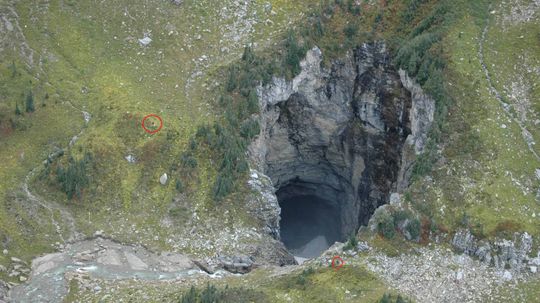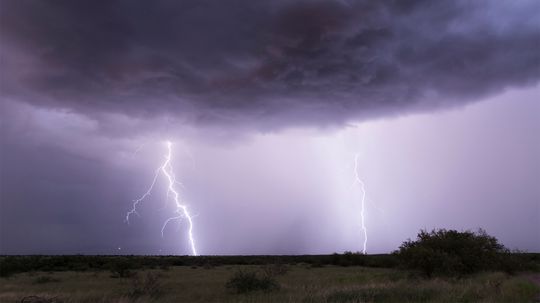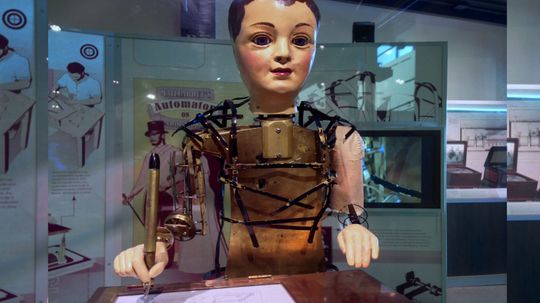Patrick J. Kiger has written for HowStuffWorks since 2008 covering a wide array of topics, from history and politics to pop culture and technology. He worked as a newspaper reporter for the Pittsburgh Press, and the Orange County Register in California, where he covered one of the biggest serial murder cases in U.S. history, and also as a staff writer at Baltimore Magazine. As a freelancer, Patrick has written for print publications such as GQ, Mother Jones and the Los Angeles Times, and on the web for National Geographic Channel, Discovery News, Science Channel, Fast Company and AARP among others. In recent years, he's become increasingly interested in how technological advances are altering urban life and the design of cities, and has written extensively on that subject for Urban Land magazine. In his spare time, Patrick is a longtime martial arts student and a fan of crime fiction, punk rock and classic Hollywood films.
Recent Contributions
That tube you put your check or deposit slip in at the bank drive-up window is called a pneumatic tube. This was cutting edge 19th-century technology and is still in use today.
Hand sanitizers can only get you so far in preventing a viral infection. Scientists are discovering how visible light can be used to destroy viruses. Learn about the laser technique and what it means for the future.
How, in today's world, could a cave this massive go undetected for so long?
Advertisement
Ever sat on an airplane and wondered how your laptop works at 30,000 feet?
A very strong storm doesn't automatically mean death or destruction. You can improve the odds of surviving intact with reinforcements to your home. Plus, scientists are improving their forecast methods. Let's look at high-tech and low-tech storm alerts.
It's sometimes easy to confuse the two, but weather and climate are very different things.
In the future, as we send space probes and manned missions to explore the solar system and possibly colonize other worlds, there's a major problem that we'll have to overcome -- keeping in touch with them.
Advertisement
"Stop, what's that sound?" Doesn't it creep you out when you don't know? There are lots of sounds out there that baffle even scientists.
The Manhattan Project built the city of Oak Ridge in rural Tennessee, where secret facilities produced uranium-235 for the atomic bomb.
Only 25 percent of glass containers used by U.S. consumers were recycled in 2018, the most recent year for statistics. So, why aren't Americans doing better?
The search team used a radar-equipped drone to locate a P-38 from the so-called "Lost Squadron" that crash-landed in Greenland in 1942. But the story doesn't end there.
Advertisement
Smartphone cameras enable us to take striking pictures of strange atmospheric phenomena—though we don’t always know what we’re seeing.
Though a highly publicized 1989 cold fusion breakthrough was subsequently discredited, research is still being conducted in hopes of future success.
Outer planets in our solar system have atmospheres made up of flammable chemicals that can cause explosions on Earth. Could a rocketship, or electric spark, ignite them?
Maillardet's Automaton, built around 1800, can write poems and draw pictures and was a precursor to today's sophisticated robots.
Advertisement
First discovered in the late 1930s, muons are passing through you and everything around you at a speed close to light, as cosmic rays strike particles in our planet's atmosphere. So what are muons and how are they informing the new physics?
Although it doesn't happen often, large passenger jets crash for many reasons, from mechanical failure to pilot error.
Predicting turbulence isn't an exact science, but airline pilots use a variety of tools both high-tech and low before asking you to buckle up.
Research suggests the human brain is wired to distinguish the rhyme and rhythm of verse from ordinary prose, and to react to literary contemplation.
Advertisement
Scientists are still trying to figure out the essence of dark matter. If they do, will it lead only to greater understanding, or can we develop new technologies?
"Hahaha ... we've come to destroy your world!" Or so it must read in the chapter of the "Evil Robot Handbook" on what to say when you first encounter humans. Here are 10 robots you really don't want to mess with.
Do you want to make a new photo look as though it was taken in the early 1900s? You're looking for the sepia tone effect — and all it takes is a special chemical soak or a few clicks on the computer to get it. Learn how today!
Have you ever read "Journey to the Center of the Earth" and wondered if it were possible to do it? Well, scientists are in the process of giving it their best shot. How hard is it to dig a hole this deep, and what might they find?
Advertisement
Measuring how fast an aircraft travels depends on whether you factor in the speed of the wind behind it.
In 1957, Hugh Everett first wrote about the multiverse — different realms where every choice spawns a separate universe in which another version of ourselves does something different. It sounds crazy, but here are some reasons it might be true.

























